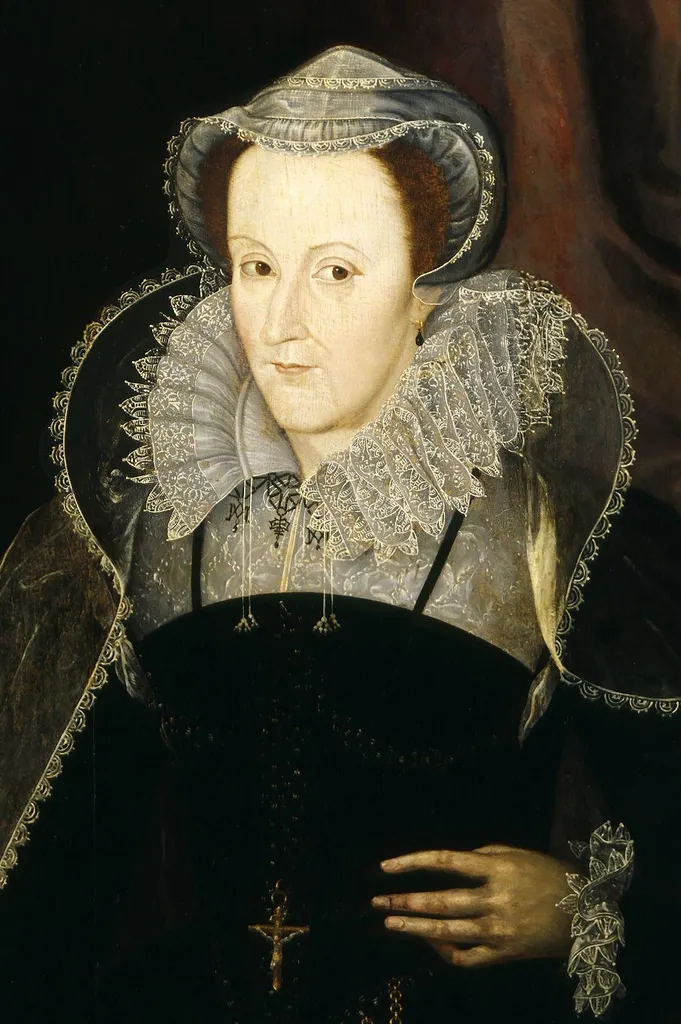Archaeologists Are Excavating Sheffield Castle, One-Time Prison of Mary, Queen of Scots
The Scottish queen spent 14 years imprisoned at the medieval stronghold
/https://tf-cmsv2-smithsonianmag-media.s3.amazonaws.com/filer/7a/7e/7a7eeaef-735a-4a1e-b36c-ca63854c8067/sheffield.jpg)
By all accounts, England’s Elizabeth I never should’ve made it to the throne. Bastardized following the 1536 execution of her mother, Anne Boleyn, young Elizabeth’s childhood was marred by the ever-changing whims of her father, Henry VIII. Following his death in 1547, Elizabeth was third in the line of succession, eligible to rule only in the unlikely event that her siblings, Edward VI and Mary I, died without heirs. Miraculously, that’s exactly what happened.
It’s unsurprising that Elizabeth’s 44-year reign found her constantly looking over her shoulder: After all, her mother’s meteoric rise and fall, as well her own precarious path to the crown, served as ominous reminders of just how quickly a monarch can lose power. Elizabeth’s cousin, Mary, Queen of Scots, experienced the consequences of her relative’s paranoia firsthand when she fled to England in 1568. Instead of receiving sanctuary, Mary found herself a prisoner, locked away in the towering fortress of Sheffield Castle and its associated estates for 14 long years.
The Guardian’s Josh Halliday reports that archaeologists recently began excavation work at the site of the castle, which was destroyed by the English Civil War’s Parliamentarian faction in 1648. Although the castle’s ruins were further compromised by construction of an indoor market during the 1960s (since demolished), researchers remain hopeful that the dig will reveal new insights on the one-time royal prison.
According to the University of Sheffield’s Department of Archaeology, the castle underwent excavations between 1929 and 1940, as well as 1958 and 1972, which, archaeologist John Moreland tells BBC News, “uncovered large parts including the gatehouse, the moat, some interior buildings and perhaps part of the dungeon.” The finds, he says, make it “clear there's significant archaeology here.”
Sheffield Castle was built at the intersection of two rivers during the late 11th or early 12th century. It rose to prominence as one of northern England’s most impressive strongholds, and by the 15th century, had passed to the Earl of Shrewsbury’s line—George Talbot, 6th Earl of Shrewsbury, served as Mary’s keeper during her years of captivity.
The Yorkshire Post’s David Behrens writes that Sheffield, a borough of South Yorkshire, is best-known today for its steel production and rich industrial heritage. During the medieval period, however, the castle served as Sheffield’s claim to fame.
“[Sheffield Castle] has seen the thunder of war, the rattle of the drum, the blast of the cannon,” Ron Clayton, a member of the Friends of Sheffield Castle, tells the Guardian’s Halliday. “People have been killed fighting to take possession of this castle.”
According to Halliday, the excavations, which are expected to take nine weeks, are part of a roughly $1 million campaign to revitalize Castlegate, the one-time city center of Sheffield. Researchers hope to unearth the castle’s remains, as well as produce a virtual reality tour that enables interested parties to explore the fortress for the first time in nearly 400 years.

Mary spent roughly a third of her life imprisoned at Sheffield. A Catholic ruler with strong ties to the English throne—her paternal grandmother, Margaret, was Henry VIII’s older sister—her mere presence represented a threat to the Protestant Elizabeth. Fearful that Mary would become a rallying point for England’s Catholics, Elizabeth consigned her cousin to a life of imprisonment.
At Sheffield Castle, Mary distracted herself from her plight by embroidering, reading books and writing letters. As Martin Hannan of Scottish newspaper the National explains, over the years, the Scottish queen enjoyed the company of an entourage ranging in size from 15 to 42 and was even permitted to receive guests and holiday at the Buxton spa. She remained, however, severely confined and in increasingly poor health, with the damp conditions at Sheffield exacerbating her rheumatism and arthritis.
Convinced that she was wrongfully imprisoned, Mary often petitioned supporters (and Elizabeth) to secure her release. Still, the Tudor queen was implacable, and in a 1584 letter, she noted, “We wish that … she were as innocent therein as she laboreth greatly to beare both us and the world in hand that she is.”
In addition to Sheffield, Mary was imprisoned in several other estates, including Chartley Castle, where she became embroiled in the seditious Babington Plot—according to History Magazine, a devoted Catholic named Anthony Babington wrote coded letters to Mary, explaining his plans to rescue her and assassinate Elizabeth. Although Mary did not authorize all of Babington’s bold proposals, her replies were enough to cement her fate.
On February 8, 1587, the 44-year-old Scottish queen was beheaded at Fotheringhay Castle. She had spent a total of 14 years imprisoned in Sheffield and an additional four in various English strongholds—ironically, her captor’s fears that Mary would usurp the English crown proved apt in a roundabout way: After Elizabeth died childless in 1603, it was Mary’s son, James VI of Scotland and I of England, who ascended to the throne as the first to rule a united British kingdom.
/https://tf-cmsv2-smithsonianmag-media.s3.amazonaws.com/accounts/headshot/mellon.png)
/https://tf-cmsv2-smithsonianmag-media.s3.amazonaws.com/accounts/headshot/mellon.png)